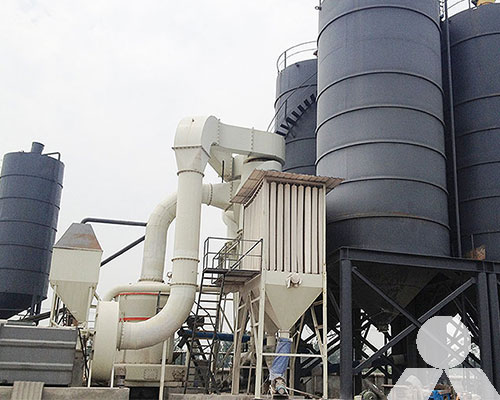Structural principle of bentonite Raymond Mill
The structural principle of a Bentonite Raymond Mill refers to the working mechanism and design features of the Raymond Mill specifically designed for grinding Bentonite. The Raymond Mill is a commonly used grinding equipment in the mining and milling industry, and it utilizes a grinding roller device to apply pressure on the material to achieve the desired grinding effect.

The structural principle of a Bentonite Raymond Mill typically includes the following components:
- Grinding Roller Assembly: The grinding roller assembly is a key component of the Raymond Mill and consists of a set of grinding rolls suspended on a spider arm assembly. The grinding rolls rotate around their own axis and exert pressure on the material. In the case of Bentonite grinding, the grinding rolls are often made of durable materials like high-strength alloy steel or ceramic to withstand the abrasive nature of Bentonite.
- Grinding Ring: The grinding ring is a circular track that is fixed on the inner side of the mill’s casing. The grinding rolls roll on the grinding ring during operation, and the Bentonite material is ground between the grinding rolls and the grinding ring. The grinding ring is typically made of wear-resistant materials to ensure long-term operation.
- Grinding Chamber: The grinding chamber is the space between the grinding rolls and the grinding ring where the grinding process takes place. Bentonite material is fed into the grinding chamber through a feeder and is ground by the rotating grinding rolls under the pressure exerted by the grinding ring. The design of the grinding chamber may vary depending on the specific Raymond Mill model and manufacturer.
- Classifier: The classifier is responsible for controlling the fineness of the ground Bentonite particles. It separates the coarse particles that haven’t reached the desired fineness from the fine particles that meet the requirements. The classifier helps to achieve the desired particle size distribution by controlling the airflow and adjusting the speed of the classifier rotor.
- Drive System: The Raymond Mill is driven by an electric motor through a system of belts, pulleys, and gears. The motor provides the necessary power to rotate the grinding rolls and other components of the mill.
- Air System: The air system in the Raymond Mill is crucial for the grinding process. It helps to transport the ground Bentonite particles and remove the fine particles from the mill. The air system consists of a fan, an air intake duct, and an exhaust duct.
Overall, the structural principle of a Bentonite Raymond Mill involves the rotation of grinding rolls, the pressure exerted by the grinding ring, the grinding chamber where the grinding process occurs, the classifier for particle size control, the drive system for powering the mill, and the air system for particle transportation and separation. These components work together to achieve efficient grinding of Bentonite and other materials.









